Related Research Articles

Star of India is an iron-hulled sailing ship, built in 1863 in Ramsey, Isle of Man as the full-rigged ship, Euterpe. After a career sailing from Great Britain to India and New Zealand, she was renamed, re-rigged as a barque, and became a salmon hauler on the Alaska to California route. Retired in 1926, she was restored as a seaworthy museum ship in 1962–3 and home-ported at the Maritime Museum of San Diego in San Diego, California. She is the oldest ship still sailing regularly and also the oldest iron-hulled merchant ship still afloat. The ship is both a California Historical Landmark and United States National Historic Landmark.

The River Mersey is a river in the North West of England. Its name is derived from Old English and means "boundary river", possibly referring to its having been a border between the ancient kingdoms of Mercia and Northumbria. For centuries it has formed part of the boundary between the historic counties of Lancashire and Cheshire.

The Black Country Living Museum is an open-air museum of rebuilt historic buildings in Dudley, West Midlands, England. It is located in the centre of the Black Country, 10 miles west of Birmingham. The museum occupies 105,000 square metres of former industrial land partly reclaimed from a former railway goods yard, disused lime kilns, canal arm and former coal pits.

Falls of Clyde is the last surviving iron-hulled, four-masted full-rigged ship, and the only remaining sail-driven oil tanker. Designated a U.S. National Historic Landmark in 1989, she is now a museum ship in Honolulu, but her condition has deteriorated. She is currently not open to the public. In September 2008, ownership was transferred to a new nonprofit organization, the Friends of Falls of Clyde. Efforts to raise $1.5 million to get the ship into drydock did not succeed. In November 2021 HDOT accepted a bid from Save Falls of Clyde – International (FOCI) to transport the ship to Scotland for restoration.

PS Waverley is the last seagoing passenger-carrying paddle steamer in the world. Built in 1946, she sailed from Craigendoran on the Firth of Clyde to Arrochar on Loch Long until 1973. Bought by the Paddle Steamer Preservation Society (PSPS), she has been restored to her 1947 appearance and now operates passenger excursions around the British coast.
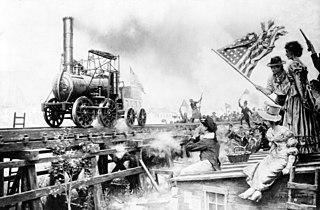
The Stourbridge Lion was a railroad steam locomotive. It was the first foreign built locomotive to be operated in the United States, and one of the first locomotives to operate outside Britain. It takes its name from the lion's face painted on the front, and Stourbridge in England, where it was manufactured by the firm Foster, Rastrick and Company in 1829. The locomotive, obtained by the Delaware & Hudson Canal Company, was shipped to New York in May 1829, where it was tested raised on blocks. It was then taken to Honesdale, Pennsylvania for testing on the company's newly built track. The locomotive performed well in its first test in August 1829 but was found to be too heavy for the track and was never used for its intended purpose of hauling coal wagons. During the next few decades a number of parts were removed from the abandoned locomotive until only the boiler and a few other components remained. These were acquired by the Smithsonian Institution in 1890 and are currently on display at the B&O Railroad Museum in Baltimore.

W. T. Preston is a specialized sternwheeler that operated as a snagboat, removing log jams and natural debris that prevented river navigation on several Puget Sound-area rivers. She is now the centerpiece of the Snagboat Heritage Center in Anacortes, Washington. She was designated a National Historic Landmark in 1989. Built in 1929, she is one of two surviving snagboats built and operated by the United States Army Corps of Engineers, and the only one on the American west coast.

Mayflower is a steam tug built in Bristol in 1861 and now preserved by Bristol Museums Galleries & Archives. She is based in Bristol Harbour at M Shed. She is the oldest Bristol-built ship afloat, and is believed to be the oldest surviving tug in the world.
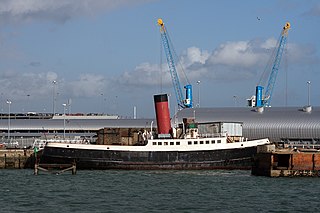
TSS T/T Calshot is a tug tender built in 1929 by John I Thornycroft & Co, and completed in 1930 for the Red Funnel Line. Calshot is one of only three surviving classical tender ships which served the great ocean liners. In her career, Calshot has tendered some of the most famous ocean liners ever built, such as the RMS Caronia, the Cunard Queens RMS Queen Elizabeth and RMS Queen Mary, the SS United States, and the White Star Line ship RMS Olympic. During World War II she was requisitioned by the British Admiralty for servicing troop ships and took part in D-Day. She is a registered vessel of the National Historic Fleet of the United Kingdom, holding Certificate No. 1.
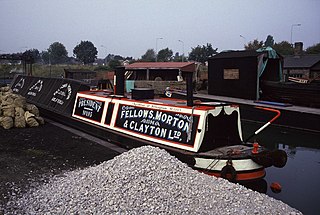
President is a historic, steam-powered narrowboat, built in 1909 by Fellows Morton & Clayton (FMC) at their dock at Saltley, Birmingham, England. It is now owned by the Black Country Living Museum, where it is based. President is registered by National Historic Ships as part of the National Historic Fleet.
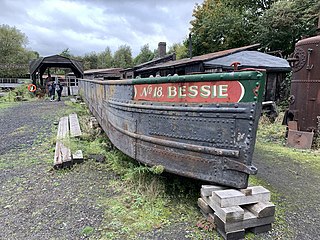
Bessie is a historic, single ended riveted iron day boat, built in 1895 for the Hartshill Iron Company. It is now owned by the Black Country Living Museum, Dudley, West Midlands, England, where it is based.
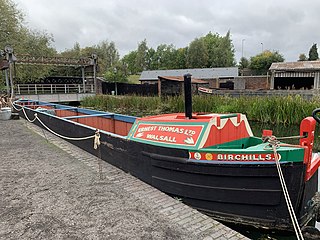
Birchills is a historic, ‘Joey’ boat with a small day cabin, built in 1953 by Ernest Thomas of Walsall. Birchills was one of the last wooden day boats made and was used to carry coal to Birchills Power Station and Wolverhampton Power Station. It is the only surviving 'Joey' with a day cabin.
Diamond was built by John Crichton & Co. of Saltney, Chester for Midland and Coast Canal Carrying Company of Wolverhampton. The boat was built in Chester in 1927 and first registered at Wolverhampton in 1928. She was one of six iron boats in the fleet fitted with two cabins for long-distance traffic between the Black Country and the ports on the Mersey Estuary. Having been damaged during an air raid on Birmingham in 1944 she was sold for scrap to Ernest Thomas by Fellows, Morton & Clayton who had by then acquired Midlands and Coast. Rebuilt and renamed ‘Henry’ she carried coal until the 1960s when she was resold to ‘Caggy’ Stevens of Oldbury and renamed ‘Susan’. It is now owned by the Black Country Living Museum, where it is based and can be seen dockside in the Lord Ward's Canal Arm at the Black Country Living Museum in Dudley. Diamond is on the National Historic Ships register.

Kildare is an un-powered butty boat constructed with wrought iron sides and an elm bottom. She was built for Fellows Morton & Clayton around 1913 by Braithwaite & Kirk of West Bromwich to be towed behind a powered craft like President. She is complete with a fully fitted boatman's living cabin and traditional covering cloths over the main hold area.

Peacock is a British narrowboat. She was built as a flyboat for Fellows Morton & Clayton (FMC) at Saltley, Birmingham in 1915, as fleet number 102. FMC had been using a fleet of steam fly boats since 1889, but in 1912 introduced motor boats such as Peacock into their fleet. 'Fly' boats work day and night non-stop, and with an all-male crew the cabins were more spartan than those of long distance family crewed boats.

Stour is an all-wooden motor narrow boat powered by a Bolinder 15 h. p. diesel engine. It was built as a tar tanker in 1937 by Fellows Morton & Clayton at their Uxbridge dockyard for fuel oil carriers Thomas Clayton Ltd of Oldbury.

The Mikron Theatre Company is an English touring theatre company, founded in 1972, which is notable for its tours by canal boat during the summer months, and by road in the spring and autumn. The company believes itself to be the only theatre company in the world which tours by narrowboat.

Basuto is a Clyde puffer built in 1902 by William Jacks & Co. in Port Dundas in Scotland for its own use on the Forth and Clyde Canal.
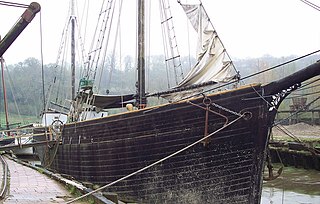
The Garlandstone is a gaff-rigged sailing Tamar Ketch, built in Calstock in Cornwall, England, and launched on 27 January 1909. It was built by James Goss on speculation at the foot of Calstock Viaduct. She was designed for transporting goods between Great Britain and Ireland.